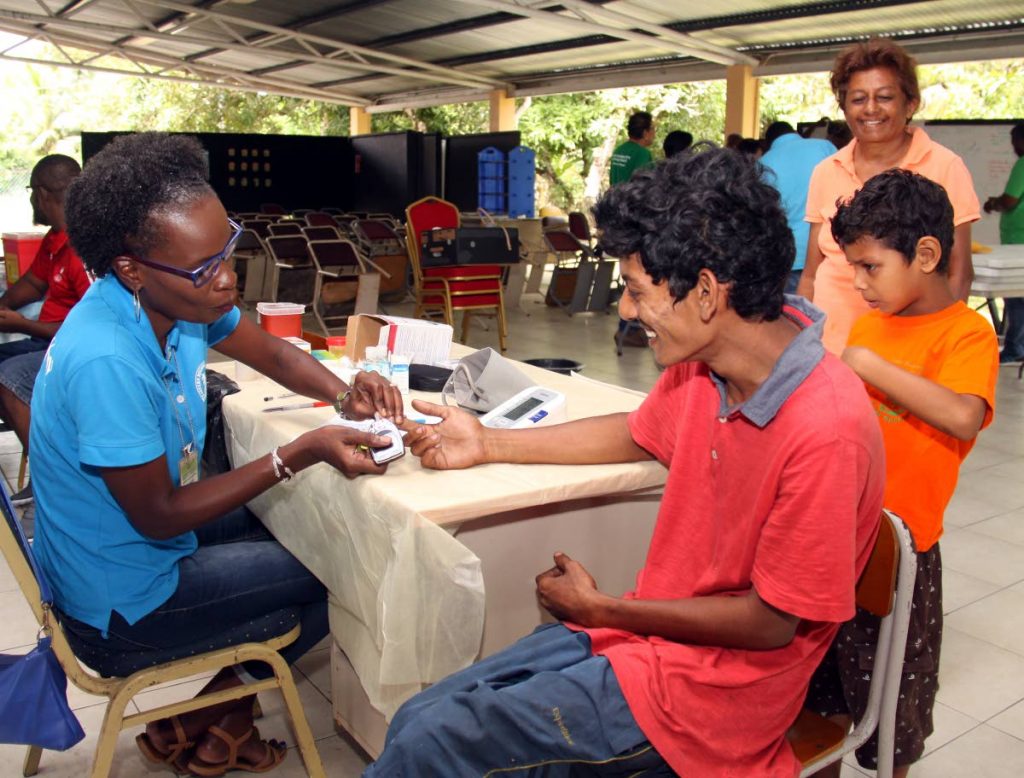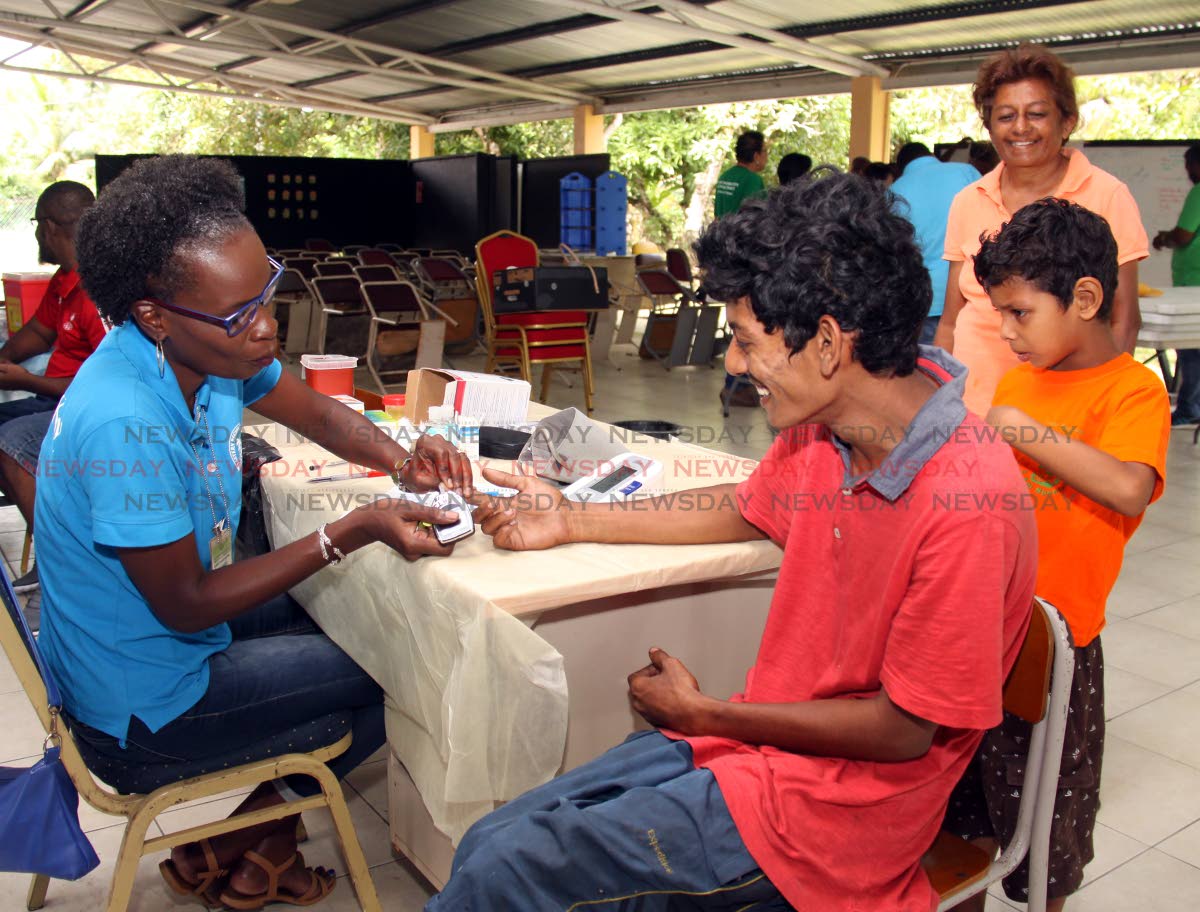Medical aid for Grande flood victims

The fear of diseases becoming an epidemic post flooding is a real concern among citizens but that concern is being put to rest. On October 20, catastrophic levels of flooding drenched many communities in Trinidad, starting from midday the day before.
The Eastern Regional Health Authority (ERHA), in collaboration with the Sangre Grande Regional Corporation (SGRC) and the TT Medical Association, embarked upon a health caravan which started at the North Oropouche Government Primary School yesterday.
Twelve doctors and 15 nurses set up clinic at the school at the heart of the hardest hit areas in Sangre Grande. The school was under six feet of water during the flood.
Emergency medicine specialist and vice president of the TT Medical Association Darren Dookeeram said, “What we are looking at is the prevention of infectious diseases. Because of the trappings of pockets of water, there is usually an upsurge in mosquito-borne diseases.”
Dookeeram said a lot of people were complaining about viral borne diseases or respiratory tract infections.
ERHA CEO Ronald Tsoi-a-Fatt, in a telephone interview with Sunday Newsday, praised staff at the authority, “I am proud of our staff because I have seen them rallying to see about patients and really living the phrase, ‘caring is the key.’ Doctors and nurses manned double shifts as other staff members couldn’t get to work and those on duty couldn’t leave.”
According to Tsoi-a-Fatt, some staff members got onto the back of vans in order to get to hospital to see about their patients. “The clinics are needed, as some of our patients would have lost their medication. So the doctors are writing the prescription on spot and a pharmacy on wheels is right outside. We have a dietician on board as our approach really is promoting preventive treatment.”
Both Tsoi-a-Fatt and Dookeeram confirmed that skin rashes would be common among those affected by the floodwaters as Tsoi-a-Fatt described one case in which a two-year-old from Guaico developed a rash.
Tsoi-a-Fatt said desperation sometimes caused people to use dried mattresses which were soaked by flood waters leading to the skin rashes.
When Sunday Newsday visited yesterday, SGRC chairman Martin Terry Rondon was having his blood pressure checked at the clinic which continues today at the same venue. He said, “I wanted to do the clinic two days after the flooding. We were giving out the supplies and the mattresses but we had to give it out on dirty ground. Just by looking at the children, I knew they needed the medical attention.
“With that being said, I am calling for a relief centre, so that all of the needs can be taken care of on the day after.”
Also at the caravan were representatives of the Women Federation for World Peace International (Trinidad) along with their president Princes Lee Keith. The NGO distributed school bags and stationary to affected children. The health caravan would be going door to door through the affected communities in the Sangre Grande region from Tuesday.




Comments
"Medical aid for Grande flood victims"